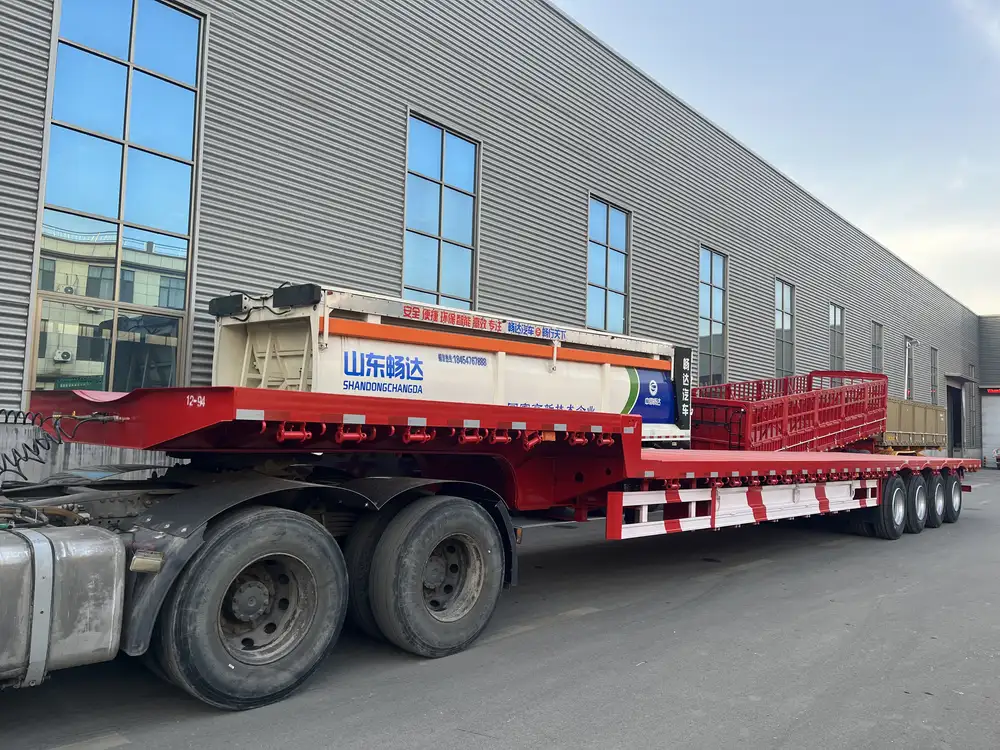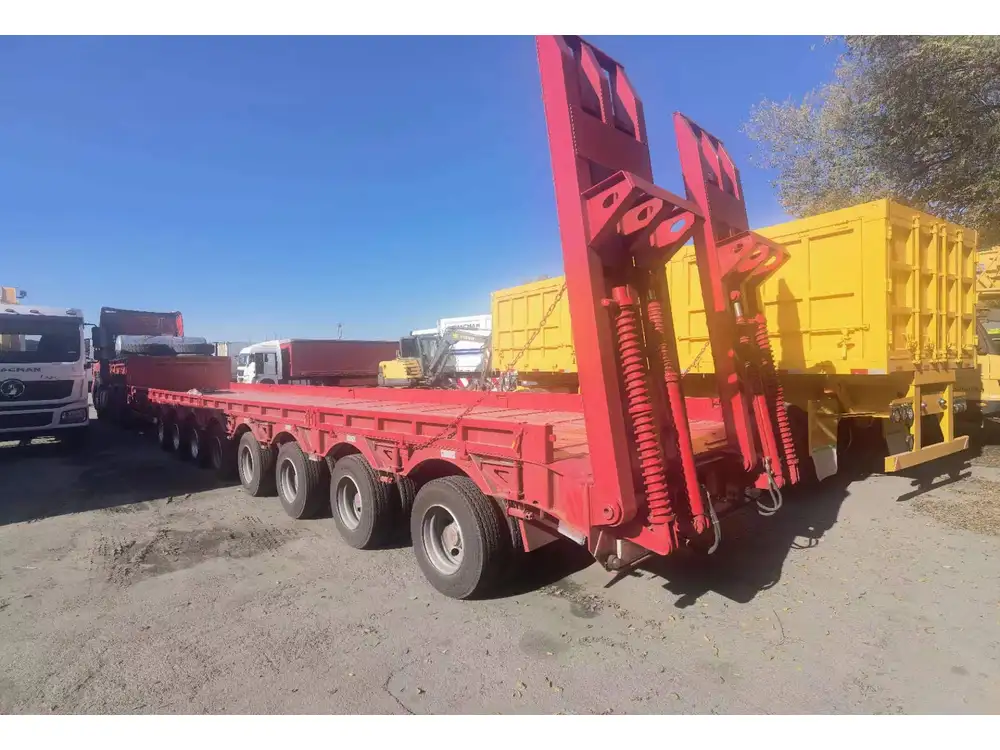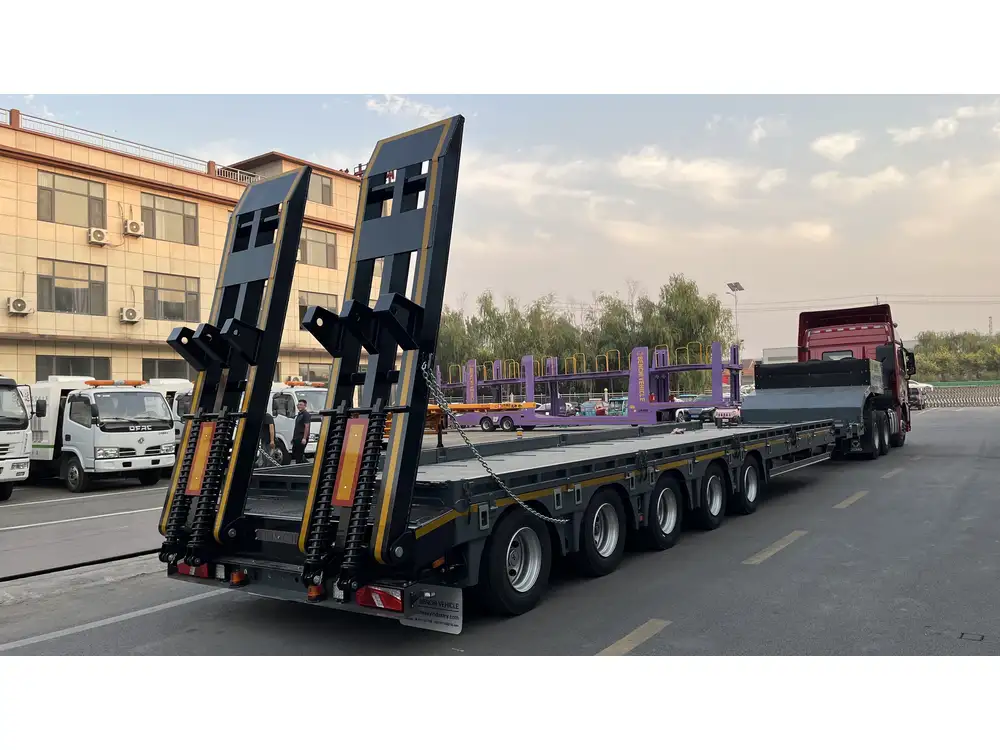In the complex universe of data communication, particularly within the realm of network protocols, a clear understanding of the architecture of a data-link frame is paramount. This understanding is essential for manufacturers of semi-trailers who might also engage in complex logistics and data transmission processes. In this detailed discussion, we will elucidate the critical components and functionalities of the trailer of a data-link frame, exploring how it impacts data integrity, error handling, and overall communication efficiency.
Overview of Data-Link Layer
The data-link layer, which is the second layer of the OSI model, is predominantly responsible for node-to-node data transfer and error correction from the physical layer. It ensures that data is packaged in frames that can be transmitted over various types of media, protecting the transmitted data from corruption or loss during its journey from the source to the destination.
Key Components of a Data-Link Frame
To delve into the specific role of the trailer, it’s vital first to comprehend the basic structure of a data-link frame:
| Component | Size | Description |
|---|---|---|
| Preamble | 7 Bytes | Used for synchronization between sender and receiver. |
| Start Frame Delimiter (SFD) | 1 Byte | Marks the start of the frame. |
| Destination Address | 6 Bytes | The MAC address of the intended recipient. |
| Source Address | 6 Bytes | The MAC address of the sender. |
| Ethertype/Length | 2 Bytes | Indicates the protocol encapsulated in the payload. |
| Payload | 46-1500 Bytes | The actual data being transmitted. |
| Trailer | 4-8 Bytes | Contains error-checking and control information. |

The Role of the Trailer
Error Detection and Correction
Arguably, the most critical function of the trailer in a data-link frame is to facilitate error detection. This is achieved through mechanisms such as cyclic redundancy check (CRC). Understanding how CRC is structured and calculated is crucial for recognizing the integrity of data.
- Cyclic Redundancy Check (CRC):
- Functionality: It employs polynomial division to create a unique checksum representing the data frame.
- Implementation: At the sender’s end, the CRC value is computed and appended to the trailer. On the receiver’s end, the same calculation is performed. If the CRC values match, the frame is considered error-free; otherwise, it is discarded.
Frame Check Sequence (FCS)
The frame check sequence (FCS) located within the trailer provides a method for detecting alterations in encoded text that might have occurred during transmission. This attention to detail ensures that nodes are only dealing with accurate and trustworthy information.
- Importance: By verifying the FCS, the receiving system can execute re-transmission requests for any corrupted frames.

Control Information
The trailer also serves a second essential function—storing control information that aids in managing the overall integrity and flow of data.
- Examples of Control Features:
- Sequence Numbers: These can be used to identify the order of frames, ensuring they are processed in the correct sequence.
- Acknowledgment Information: May indicate whether a specific frame has been successfully received.
| Function | Description |
|---|---|
| Error Detection | Using CRC or FCS to verify data integrity. |
| Flow Control | Managing data transmission to prevent overload. |
| Frame Sequencing | Order of frames is tracked to ensure correct processing. |
Importance of Each Component in the Trailer
Comparison of Error-Checking Methods
While CRC is commonly used, other error-checking methods might also be employed in different network protocols. Each offers unique advantages and disadvantages, as outlined in the table below.
| Method | Advantage | Disadvantage |
|---|---|---|
| Checksum | Simple and fast. | Less reliable; more prone to errors. |
| Cyclic Redundancy Check (CRC) | High error detection capability. | More complex and resource-intensive. |
| Hamming Code | Can detect and correct errors. | Requires more overhead for storing data. |

Real-World Applications
In practical terms, the components of a data-link frame and its trailer are integral to various professional applications, particularly within logistics and transport industries. Understanding these concepts can directly improve operational efficiency and data reliability.
- Logistics and Transport: Accurate tracking information ensures that transport companies can monitor the location and condition of their semi-trailers, enhancing supply chain management.
- Telecommunications: Reliable data transfer protocols are necessary for real-time communication applications, such as VoIP and online video streaming.
Addressing User Issues Directly
Common Questions Regarding Data-Link Frames
What happens when a frame is corrupted?
- If any discrepancies occur during transmission—detected via CRC—the affected frame is discarded, prompting the sender to resend it.
How do different protocols impact the function of the trailer?
- Protocols like Ethernet, PPP, and Frame Relay employ unique frame structures, but the trailer serves a similar purpose across these: ensuring data integrity.
Can trailers differ based on the medium used?
- Yes, while fundamental roles remain consistent, the specifics of trailers can differ across mediums (copper, fiber optics, etc.) and protocols, reflecting the distinct attributes of each technology.

Recommendations for Enhancements
To optimize data transmission and enhance reliability, consider the following strategies:
- Advanced Monitoring: Implementing advanced monitoring tools that analyze frame integrity in real-time.
- Education and Training: Investing in training for employees regarding data-link frame mechanics can help prevent errors and improve data flow.
- Protocol Selection: Choose appropriate protocols that align with specific operational needs, factoring in the environment and data type.
Enhancing User Engagement Ensuring Data Integrity
Engagement in this topic can substantially benefit from interactive elements that support the user’s understanding. Below are suggested interactive tools:
- Flowcharts: Create a flowchart that visually demonstrates the journey of a data packet through a data-link layer.
- Quizzes: Develop quizzes that reinforce the knowledge of data-link frame components, focusing on their function and importance.
- Hands-On Simulations: Incorporate simulations that allow users to practice error detection and frame reconstruction.
In Conclusion
Understanding the intricate details of the trailer within a data-link frame offers profound insights that can significantly enhance the operational efficiencies of various industries, including logistics and telecommunications. In a world where data integrity and reliability are paramount, recognizing the role of every component within the data-link frame is critical.
Ultimately, by honing in on these specialized details, we empower businesses—such as semi-trailer manufacturers—to navigate the complexities of data communication while maximizing operational efficacy. Embrace the intricate yet fascinating world of data transmission, and let it inform your strategies toward effective logistics or telecommunications solutions.



